Google’s annual Pixel release is always significant. Excitement reaches fever pitch as the launch date looms, as the Pixel is seen as the phone for the Android faithful. The Pixel sets the tone for where Android goes over the next 12 months, launching with the latest release of the world’s dominant mobile operating system. It shows off features that are brought to other devices either by Google itself, or by other manufacturers taking note of the Pixel features and following suit.
This year’s Pixel launches into an increasingly diverse market, with a multitude of screen sizes and technologies available, a number of innovative features from Android OEMs on the camera front, and the lure of foldable smartphones breathing down its neck. Google’s position atop its own Android pile is anything but assured.
With strong contenders in the same price range as the Pixel 4 from most manufacturers, Google has to fight hard to make its phone the must-have device. It’s interesting then to see that the company’s made some quite safe choices, and balanced them out with some risks – and they don’t always pan out.
Ausdroid is lucky enough to have both a Pixel 4 and a Pixel 4 XL on the test bench – the regular model is with Jason (who’s coming to it from a comparatively giant-sized Huawei P30 Pro) while the XL is with Scott (who’s been using Oppo Reno and OnePlus 7 Pro – phones of a similar size and stature).
What’s powering the Pixel 4?
Google’s not usually one to push the boat out on specs, and that’s certainly the case this year with the company opting for the Snapdragon 855 instead of its higher-powered 855+ sibling. That’s ultimately a line on a spec sheet, though – either processor is really just fine for running a flagship phone in 2019. More important is the tacit acknowledgement that they erred on RAM in the Pixel 3, upping the onboard memory from that device’s paltry 4GB to a much more acceptable (but still low by others manufacturers’ standards) 6GB.
There’s also the usual caveat of limited storage, and no Micro SD card. This isn’t a surprise by now – if you’re after a phone with more than 128GB onboard storage, Pixel might just not be for you.
Even if the internals don’t exactly wow, there is innovation on offer elsewhere. Pixel 4 is one of the first mainstream phones to boast a high refresh rate – things are silky smooth on screen. It feels like Google’s opted for an ever so slightly warmer screen temperature making it easier on the eye than some others, something done in all of the recent Pixel phones.
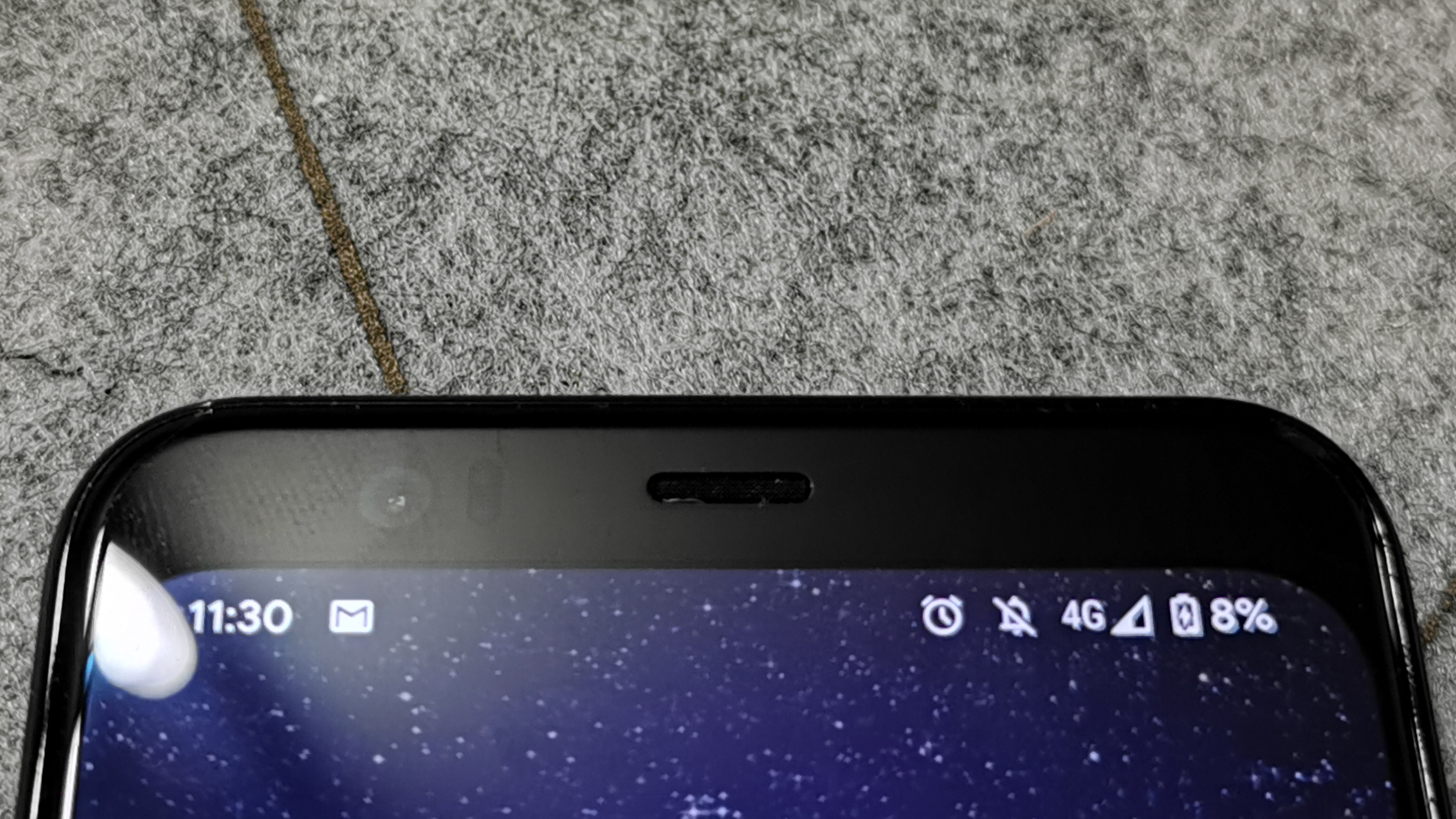
Google’s also made other changes on the display front. Having gone all-in on notches last year, this year Google has walked it back and returned to a fairly large bezel at the top of the display. Of course, it’s not just for fun – it’s housing the front facing camera, proximity sensor, facial recognition equipment and Soli radar technology.
In fact, bezels all around the face of the phone are a little larger than you might think, but it doesn’t detract from the user experience. We’re glad that Google’s resisted the temptation to go for an “Infinity” or “Waterfall” display – the Pixel’s screen is a straightforward flat display, with no weird gimmicks on its edges.
However, where Google giveth, Google also taketh away – that lovely high refresh rate screen is not as bright as displays you might find on devices made by other manufacturers, and it can be hard to see in sunlight. Jason reports having had to find shade at a bus stop because the phone’s screen was hard to read at max brightness in direct sunlight (and he was in Melbourne, of all places).
Let’s take a look at some of the device’s headline features, and some things we feel strongly about:
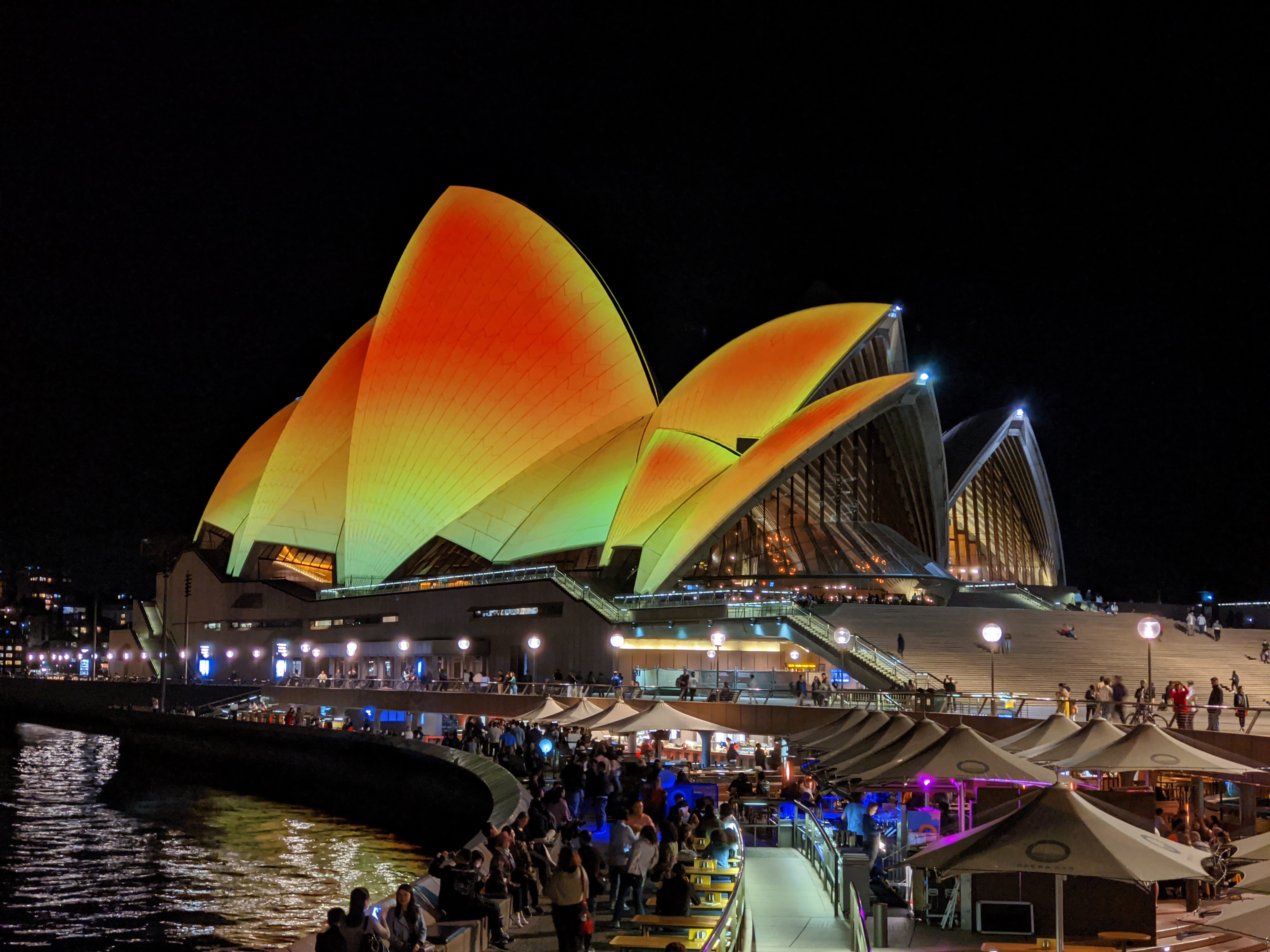
The Pixel 4 Camera
Pixel phones have long stood out as one of the best smartphone cameras on the market. Google’s been able to get astonishingly great photographic performance from a single camera for longer than we thought possible, and Pixel 4 marks the company’s first multiple-sensor main camera. This is a big deal.
We were all a little surprised to see the module announced as a dual-sensor camera last week, given the big black square on the back of the phone taking up a large enough space to house three cameras and a flash, a la Huawei’s year-old Mate 20 Pro. But nope, there’s officially two main cameras.
Coming from a phone with a third wide-angle sensor, Pixel 4 feels a little limiting in terms of framing but if you’ve never used a phone with a wide angle sensor, you won’t know the freedom you’re missing – the ability to zoom out of a scene to perfect your framing can’t be understated, and it’s unfortunately sorely missed coming from Huawei’s P30 and OPPO’s Reno 10X Zoom flagship.
This is a big deal.
What Google brings in spades though on the camera side is software prowess, and the latest Pixel’s camera app offers a few neat tricks. One of the most impressive is simple and surprising – the camera can actually track an object or focus point if you move the camera around. It really helps to ensure you’re focused on the subject, especially if it’s moving (animals and children are particularly notable in this regard).
The camera now gives us control over both Brightness and Contrast – even in Night Sight mode – which lets us see the results in the viewfinder before we take the shot. These are particularly useful, and the contrast control is super handy when shooting a subject against a dominant backlight (including but not necessarily limited to, the sun).
You can also zoom in up to 8x, although you’ll probably want to limit your zoom to the more pedestrian 2-3x as the quality of images can really degrade above that point. It serves as a reminder that Google’s not the sole player pushing smartphone photography forward these days, and innovation is also coming from elsewhere.
Google’s Night Sight makes a welcome return, with Pixel 4 delivering great results in low light with a warmth to the resulting photos that’s seldom rivalled. Given the choice of sensors in Pixel 4’s camera, Night Sight doesn’t benefit from tricks like pixel doubling that you find on offer elsewhere, and it feels like it’s having to do more work in software to keep pace with features like Huawei’s original Night Mode (first seen 18 months ago on the P20 Pro).
The reality is that all the phones offering this feature around this price point deliver great results.
Google’s not the sole player pushing smartphone photography forward these days.
One of the additions to Night Sight on Pixel 4 is an Astrophotography mode, which takes long exposure shots of the night sky and can bring out stars and other astronomical features. While the demonstrations are impressive, we’ve not had that much success with it (but also, haven’t really had a chance to take it away from relatively light-filled urban environments).
The addition of Astrophotography is nice, but ultimately feels like a bit of a niche feature. We’ve not really felt that we needed to add stars in the sky above our subjects in some of our best photos of the last few years, and the fact that it really needs a minutes-long exposure limits the kind of shots you’re really likely to take with it. That said, we’ve seldom seen quite so many pictures of starry skies being passed around on social media as we’ve seen since Pixel 4 phones made their way to the tech media. Maybe there’s something there.
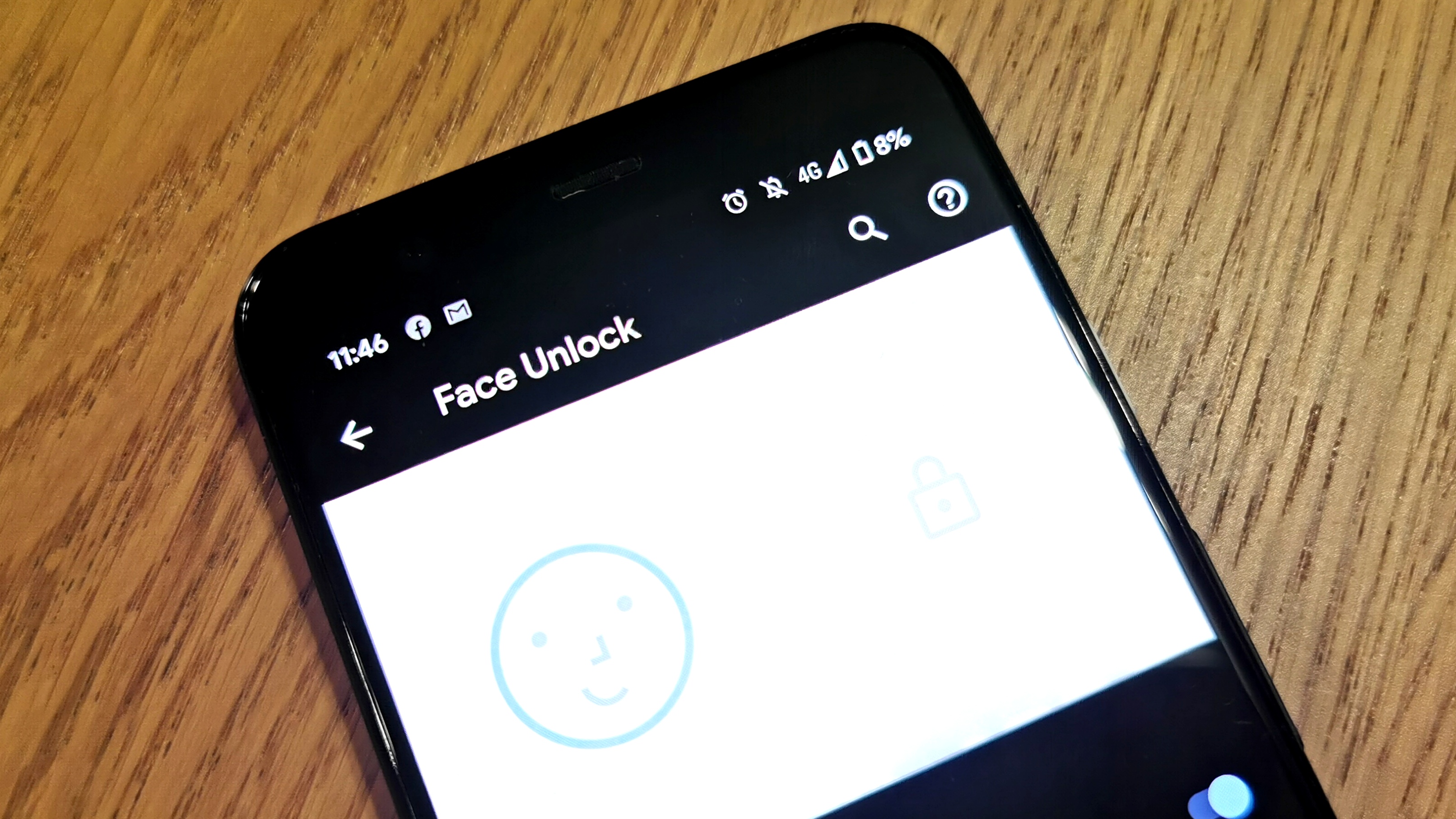
Face Unlock and Biometric Prompts
Google has completely forgone a fingerprint sensor in lieu of Face Unlock — and really, should not have. Because of the software change – the prompt for a fingerprint scan is not the same as a prompt for biometric authentication, even if it includes fingerprints – there is no back up for Face Unlock.
Despite Google reaching out to developers asking them to update to the new API, there’s been little to no uptake of it among developers and it’s no wonder – until last week, a device that needs apps to use the Biometric API didn’t exist.
It’s a disservice to Pixel 4 users.
Neither of us were able to find an app (that wasn’t written by Google) that uses Face Unlock, including Last Pass, PayPal, Bendigo Bank, Commonwealth Bank, Up Bank and Westpac. Pixel 4 users are reduced to entering PIN codes or, worse, passwords for these apps.
Google’s decision to forego a fingerprint sensor as developers make the transition was a poor one, and it’s a disservice to Pixel 4 users.
Face Unlock itself though works well, is fairly fast if you lift your phone up fast and works every time – if you’re Scott. Jason has been left staring at the lock screen a few times though. Face Unlock does not like a quick glance at the phone, rather it seems to work best if you tilt your head down or lift the phone up a little more.
Google’s omission of closed-eye detection for Face Unlock is a concern. The company pioneered Face Unlock years ago and should be aware of the pitfalls and problems it faces, yet releasing the feature in this state – and without a fingerprint scanner to use as an alternative biometric authentication method – does users a disservice. The company’s only just made a public commitment – seemingly begrudgingly – to add the feature in the coming months.
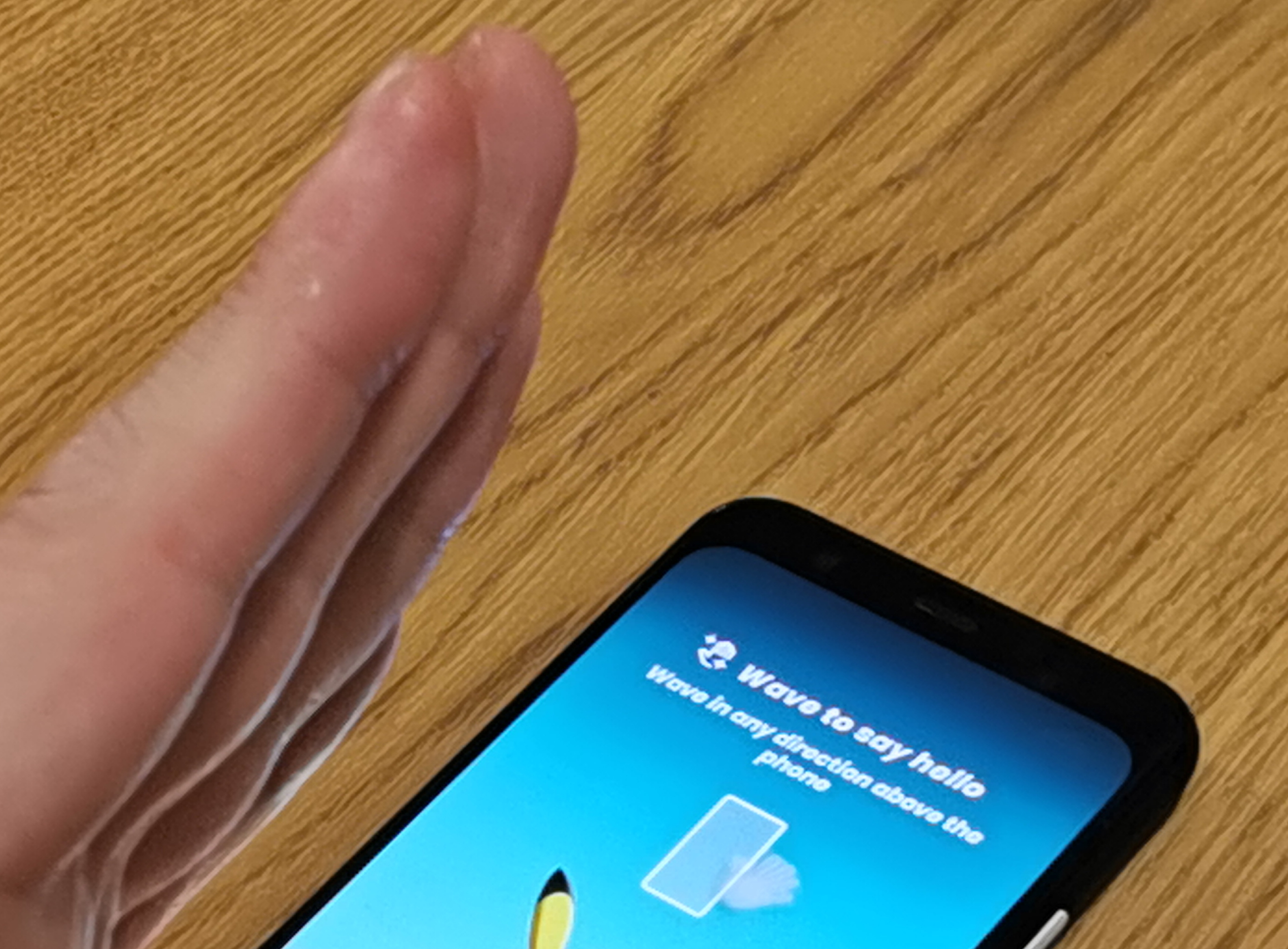
Soli Gestures
Another major feature Google touted for the Pixel 4 was the addition of its Soli radar technology, housed in the upper bezel of the phone’s face.
Soli allows Pixel 4 to detect gestures nearby, such as a wave across its face or a hand approaching the front of the phone. That’s… about it. Wave, and grab.
Soli can do so much more.
You can set wave gestures to control next/previous tracks while playing music, but given that Pixel 4 has no 3.5mm headphone jack you’re likely already listening to your music on headphones that have these controls built in already.
The addition of Soli technology in the Pixel 4 feels like a solution looking for a problem to solve. We’ve been waiting to see Google debut the technology in a consumer-facing device and, really, we thought it would be a Pixel Watch of some kind (we have still not given up hope on that).
We know that Soli is capable of recognising more detailed gestures than Google’s offering on Pixel 4. In years gone by we’ve seen tech demos at Google I/O that see devices responding to simulated dial controls, so seeing Soli limited to some really basic gestures like this makes it feel like a beta.
Oh, yeah – you can also have a Pokemon on your home screen that responds to waves and grabs, but that’s a Live Wallpaper and it’s going to drain your battery. It’s about time we brought that up.

Battery Life
There’s no easy way to say this – battery life has been abysmal. In 2019 we expect a flagship phone to last through a working day without breaking a sweat, and Pixel 4 just doesn’t make the cut.
The smaller Pixel 4 has been regularly showing a battery rundown estimate of about 6pm in a day of normal use (that’s starting the day at about 7am). It’s got a 2,800 mAh battery while the larger XL model lasts longer with its 3,700 mAh battery, but it’s not making any groundbreaking savings on battery use.
Pixel 4 charges super quickly when connected to an appropriate charger (though Google still refuses to adopt Qualcomm’s Quick charge technology by name), and it’ll charge happily on a Qi wireless charging pad. Does that excuse the fast battery rundown though?
Your work day is sorted – Pixel 4 can charge wirelessly (or on a cable, but that’s way less elegant right?) at your desk all day and you can leave the office feeling confident with your battery at 100%, but it means weekends – or any working environment where you’re not sitting at a desk, really – are a problem. Start looking around for a good portable battery.
Weekends are a problem.
Now, while we’re badmouthing the battery we should add a caveat – we’ve only had these phones a few days, and Google’s adaptive battery life adjustments haven’t really had a chance to kick in yet and we have been using it more than we would normally because we are, well, reviewing the phones. We’re going to need to come back to this for a proper measure.
It’s also worth noting the tangible difference between other manufacturers that offer prolonged battery life on their phones compared to a Pixel phone – almost every other manufacturer has extremely aggressive background app and service management policies that makes it hard to keep wearable devices connected reliably. Pixel 4, while not offering great battery life, hasn’t dropped the connection to Jason’s Galaxy Watch Active even once.

Android 10
With a new Pixel phone comes a new version of Android. While those of us with older Pixels are already getting a taste of Android 10, the new Pixel always feels like the phone or was really designed for, and while it doesn’t make major changes, it also doesn’t disappoint.
Android 10 brings with it another revision to Android’s gesture navigation, and Ausdroid opinion – like that of the community at large – is sharply divided on it.
Scott loves it, and thinks everyone should give it a go while Jason is perilously close to giving up and going back to the classic 3-button navigation. Gestures present a learning curve – there’s no longer a single obvious button to do something, but you do get used to them.
Different apps seem to handle the lack of onscreen navigation keys well, or badly. Gboard, for instance, bumps the keyboard up enough to place a single down-arrow in the corner (so you can dismiss the keyboard), making you wonder why you reclaimed that line of screen space in the first place.
Android 10 doesn’t disappoint.
Android 10 now dobs on apps that are using permissions like location in the background, and gives you a notification when it happens so you can revoke or restrict it. It would be nice to be able to set a restrictive default, or change such permissions in bulk – there’s 100+ apps installed on phones when they’re daily drivers!
Finally, let’s talk themes. Google’s finally joining the crowd and offering a theme solution that’s pretty comprehensive and lets you mix and match your own style from some presets. The styles app is indeed how we’d like to see this done everywhere in future and it’ll probably serve as a model for other manufacturers in time.
Android’s official, real, honest-to-goodness Dark Mode is comprehensive – you won’t find an accidentally-forgotten unstyled dialog box or notification. It’s also taking time to gain adoption from developers, but the train has definitely left the station and we’re on our way to a Dark future.
Where are we at with our opinions?
The Ausdroid opinion on Pixel 4 is currently decidedly mixed. Scott loves the software although it lacks some of the bells and whistles many manufacturers now include. Jason is quite taken by the camera, but finds the battery life (or rather, the lack of it) unconscionable.
Our quick take on the camera is that it’s better than most on the market, but we’re not convinced that it’s going to topple Huawei or Samsung this generation.
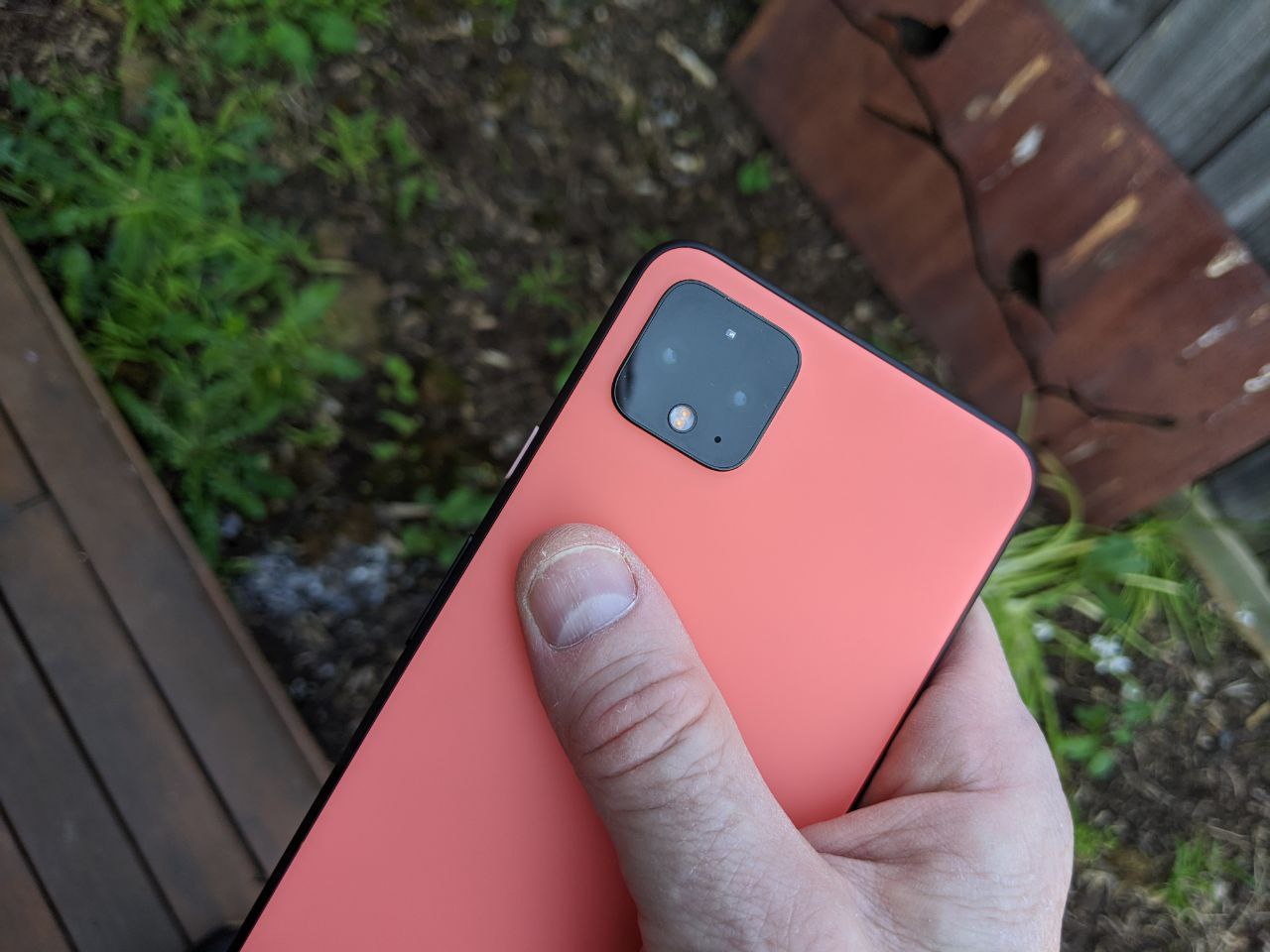
Scott’s take on the Pixel 4 XL:
This phone could be my daily driver, but I’m not quite 100% sold. If the camera can best the Oppo Reno with its 10x zoom, it might push me over the line but I’ve seen how the camera performs at 4-5x and I’m not sure it can do it.
The Pixel 4 behaves the way Android should, without quirks and idiosyncrasies so many other manufacturers introduce. It’s a big plus. It’s silky smooth, and the 90Hz screen is a big plus but it does drain the battery (especially if you click the switch to turn it on full time).
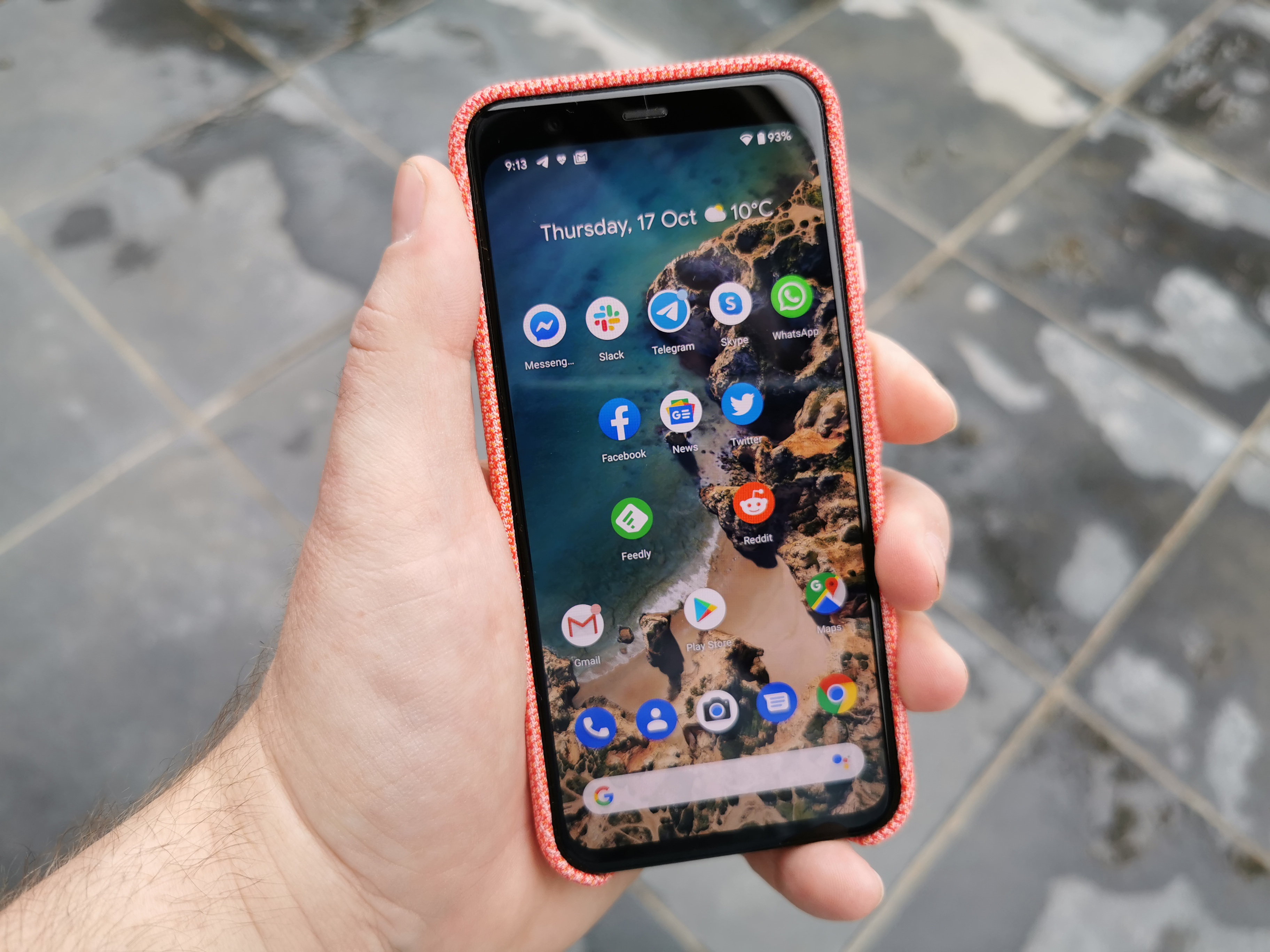
Jason’s take on the Pixel 4:
The Pixel 4 just isn’t doing it for me yet. There are definitely places where the phone hits the mark, but I’m more fixated on where Google’s missed the mark.
I’ve been used to premium phones getting me through a full day for over two years now (HTC’s U11 was the first to do it), and so the lack of grunt for getting through the day sans-charger moves the phone perilously close to dropping off the recommended list.
The Pixel’s camera is, as you would expect, lovely. It’s not as revolutionary as it used to be, though. Competitors have caught up and surpassed the Pixel camera in quality and capability, and I just can’t shake that desire to pinch the screen and zoom out just a little.
I’m not in love with the Pixel 4, and I desperately wanted to be. It’s painful to admit, but right now I feel much happier every time I pick up my Huawei P30 Pro.

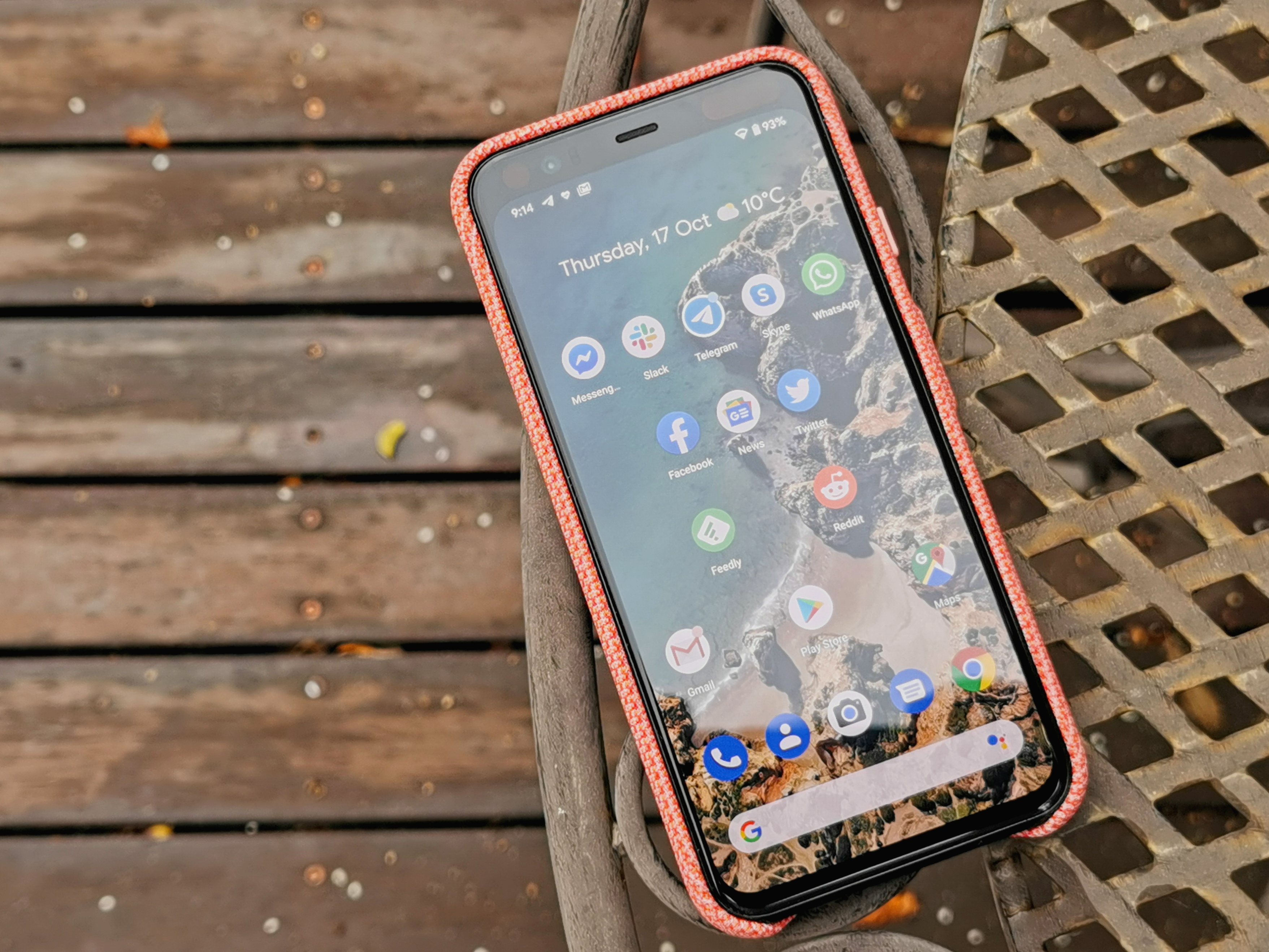






















No fingerprint sensor is a shocking decision. So easy just to pick up my Pixel 3 now and my finger just finds the sensor without any effort.
And given none of my banking or finance apps take face unlock in now going from a fingerprint to a pin code to access them. Welcome to 2015 Google.
Could you check if HDMI from an USB-C hub works? I suspect not, but would like to know 🙂
Isn’t the XL battery 3700 maH, not 4000 as indicated here? 👍
Correct! This has been fixed 🙂
Again Google follows a weird features path , at the very most obvious , bigger batteries should have been the ordet of the day , nup not Google , Even slightly more on board base storage would have been nice given there is no SD card , or even supplied an SD card ! Again not Google , what are they thinking ? they sort of get it half right every year and then stuff the rest up . Does the google marketing division canteen serve some of that Elon special type of tabacky ? why no 4k 60 fps… Read more »